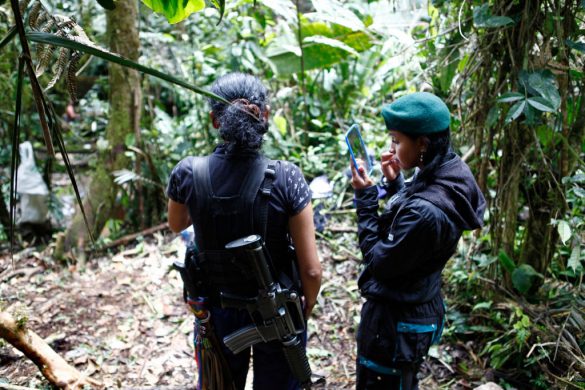Statsminister Anders Fogh Rasmussen (V) kan i disse dage sammen med statsledere fra de øvrige 21 rigeste lande i verden granske sin karakterbog for at leve op til FN-målsætningen om gratis skolegang til verdens børn i 2015.
Han får topkarakterer flere steder, men ikke uden anmærkninger. Det er u-landsorganisationen Ibis i Danmark og den internationale paraplyorganisation Global Campaign for Education, som uddeler karaktererne til regeringslederne i OECD-landene, fremgår det af en pressemeddelelse fra Ibis onsdag.
Den danske statsminister er den stille dreng i klassen af verdens rige lande, når det gælder bistand til uddannelse, hedder det. Han klarer sig godt og er den tredje bedste i klassen, men han bidrager i øjeblikket for lidt til klassens sammenhold og kammeratskab. Som den gode elev burde han gå forrest og vise politisk lederskab for at nå målet om Uddannelse for Alle.
“Anders har virkelig gjort en indsats for at forbedre sine karakterer. Det er derfor en skam, at han svigter ved kun at give så relativt lidt til grunduddannelse”, står der i den internationale karakterbog i bemærkningen til statsministerens terminskarakterer.
Karakterbogen er baseret på de mål og principper, som regeringslederne selv har sat: de skal minimum bruge 0,7 procent af bruttonationalindkomsten (BNI) på at støtte udviklingslande, med særlig fokus på grunduddannelse og de fattigste lande, hvor særligt pigerne mangler uddannelse.
– Statsministeren og Danmark får en fin placering i den internationale undersøgelse, men det sker primært fordi resten af klassens rige drenge langt fra lever op til deres internationale forpligtelser. Vi kan sagtens gøre det endnu bedre, siger Morten Blomqvist, kampagnekoordinator i IBIS.
I 2005 burde der på verdensplan have været lige så mange piger i skole som drenge. Det er ikke lykkes. Over 100 millioner børn får i dag ikke en grunduddannelse, og af dem er de 60 millioner piger.
Målet er inden for rækkevidde, men det kræver en global koordineret indsats og at de rige lande lever op til deres forpligtigelser. Særligt bekymrende er den manglende opbakning til den eneste globale finansieringsmekanisme “fast track initiativet”, der skal sikre Uddannelse for Alle.
På grund af manglende finansiering modtager kun 13 af de 51 lande den lovede støtte fra “fast track initiativet”.
Danmark giver en flot støtte til uddannelse, men giver endnu ingen støtte til den fælles pulje i “fast track initiativet”, der netop skal støtte de svageste lande. Danmark er et foregangsland og uddannelse er det største sektorprogram i den dansk bistand. Det forpligter globalt.
Yderligere information og kommentarer hos kampagnekoordinator: Morten Blomqvist; Tlf. 35 200 543, mobil 30 29 44 06. Presseansvarlig: Kicki Meyer; Tlf. 35 200 542
Missing the Mark – Summary
“At this defining moment in history, we must be ambitious. Our action must be as urgent as the need, and on the same scale”. – Kofi Annan, In larger freedom: towards development, security and human rights for all (March 2005).
On a balmy September day in New York five years ago, heads of state set themselves eight tough goals for ending global poverty: the Millennium Development Goals.
Among the most important of these was universal completion of primary education. Free basic education was declared to be the right of every child as long ago as 1948, but this time world leaders vowed to make it a reality, and no later than 2015.
As a first step, they promised to get as many girls as boys into school by 2005. And they pledged to dramatically increase their aid to basic education, promising that “No country seriously committed to education for all will be thwarted in their achievement of this goal by a lack of resources”.
On both counts, they are falling short.
With 60 million girls still out of school, the 2005 girls education target has already been missed. Lack of resources has played a large role in this shameful failure. Aid to basic education in low-income countries has increased since 2000, but only very modestly, reaching about 1,7 billion US dollar in 2003. The 22 OECD countries assessed in this report gave about 875 million of that.
This spectacularly half-hearted effort still leaves the international community 5,4 billion dollar away, according to latest estimates, from guaranteeing its share of the projected costs of getting every girl and every boy into school. The missing money amounts to less than two and a half days global military spending, or about the cost of four Stealth bombers.
Only two countries, Norway and the Netherlands, are providing their fair share of the total funding gap for universal access to primary education, while 13 donors provide less than 50 per cent of their share. In practice this means that in 2003, every Norwegian citizen contributed 66 dollar to education in the developing world, while each US citizen contributed only 55 US cent.
A quality basic education for every girl and boy in the world is an attainable and affordable goal, but it is too big for anyone – no matter how rich and powerful – to achieve on their own. Perhaps the most worrying trend uncovered in this report is the lack of donor commitment to working together through the Education for All Fast Track Initiative (FTI), the only coordinated global effort to reach the education goals.
As a partnership between rich and poor countries, the FTI is supposed to ensure that poor countries with good policies, and clear plans to educate every child, receive all the external funding they need to implement their plans. However, due to lack of rich-country support, the FTI is able to cover only 13 countries, out of 51 that are currently eligible; and even those 13 countries have yet to receive sufficient and predictable
financing.
Only five donors (Norway, Canada, Netherlands, UK and Denmark) get full marks for their support to FTI countries; nine are doing less than 10 per cent of their share.
More recent donor commitments to FTI hold out hope that the initiative may finally receive full donor backing. Nevertheless, it is fair to say that the majority of rich countries are still not pulling their weight in making this global partnership a success.
In fact, despite rhetoric about helping poor countries with good policies, rich countries continue to direct most of their aid elsewhere. Only 39 per cent of all aid to education goes to sub-Saharan Africa, even though the region accounts for 75 per cent of the global education financing gap.
In 2003, only six countries gave over 80 per cent of their aid to education to the poorest countries (Denmark, Ireland, Norway, Sweden, the UK, and Portugal). To reach the goal of universal primary education and girls education, rich countries must aim higher, and work together better.
Our report cards use internationally comparable data to assess 22 rich countries against targets and principles that they themselves have endorsed:
– giving 0,7 per cent of Gross National Income to assist developing countries;
– focusing on basic education and on the poorest countries, where girls most lack access to education;
– working together to support countries with good policies, especially those endorsed through the Fast Track Initiative; and
– spending aid wisely, on core service delivery costs, not consultants and red tape.
Læs mere på www.ibis.dk















